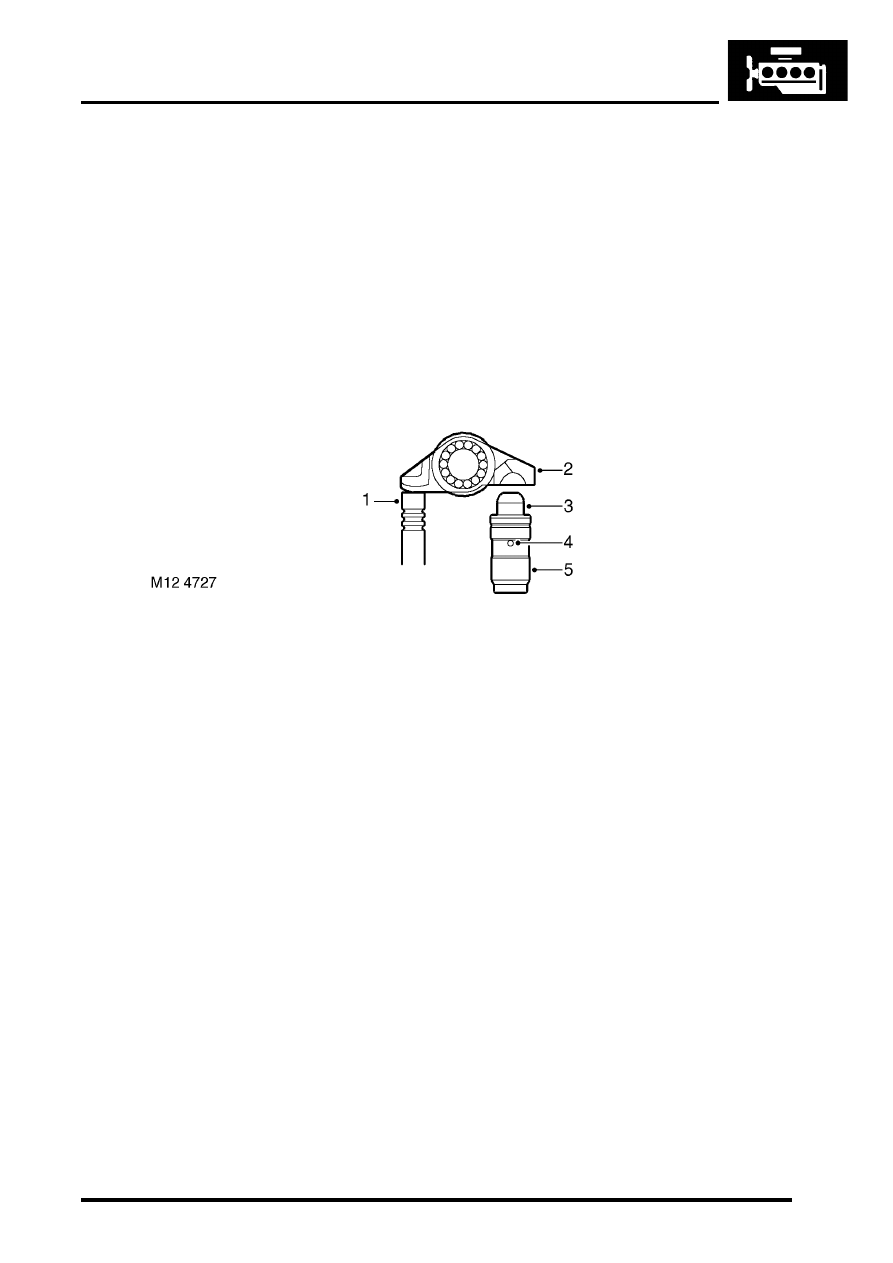Discovery 2. Manual - part 407

ENGINE - TD5
DESCRIPTION AND OPERATION 12-1-25
Inlet and exhaust valves
The inlet and exhaust valves are mounted directly above the engine block cylinders.
Each valve is a forged and ground solid one-piece head and stem which is hardened by heat treatment. The stems
are chrome-plated then ground for improved heat transfer, wear resistance and smooth operation. It is not possible
to recut the valve's face angle, but the valves can be lapped to their seats using grinding paste.
The valve springs are made from spring steel and are of the parallel single-coil type. The bottom end of the spring
rests on the flange of a spring seal which has a centre bore that locates on a recess ground into the lower valve stem.
The top end of the spring is held in place by a spring retainer which is held in position at the top end of the valve stem
by split taper collets. The taper collets have grooves on the internal bore that locate to grooves ground into the upper
stems of the valves.
The valve seats and valve guides are sintered and are interference fit into the cylinder head. The valve seats and
guides are non-serviceable.
Finger followers and Lash adjusters
1 Valve stem
2 Finger follower
3 Lash adjuster plunger
4 Oil supply hole
5 Lash adjuster body
The valves are operated through finger followers and lash adjusters, actuated by the camshaft lobes. When the
camshaft lobe presses down on the top of a finger follower roller mechanism, the respective valve is forced down
opening the effected inlet or exhaust port.
The lash adjuster body contains a plunger and two chambers for oil feed and pressurised oil. Pressurised oil is
supplied to the lash adjusters via the oil galleries in the cylinder head and through a hole in the side of the lash adjuster
body. The oil passes into a feed chamber in the lash adjuster then through to a separate pressure chamber via a one
way ball valve. Oil flow from the pressure chamber is determined by the amount of clearance between the lash
adjuster outer body and the centre plunger, oil escapes up the side of the plunger every time the lash adjuster is
operated, the downward pressure on the plunger forcing a corresponding amount of oil in the lash adjuster body to
be displaced. When the downward pressure from the camshaft and finger follower is removed (i.e. after the trailing
flank of the camshaft lobe has passed), oil pressure forces the lash adjuster's plunger up again. This pressure is not
sufficient to affect the valve operation, but eliminates the clearance between the finger follower and top of the valve
stem.